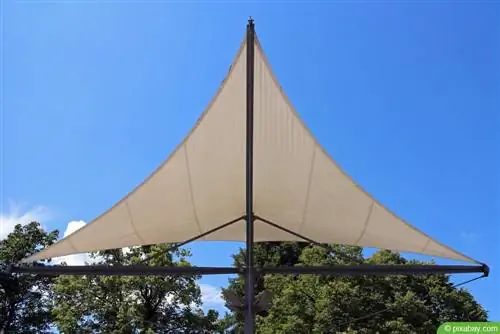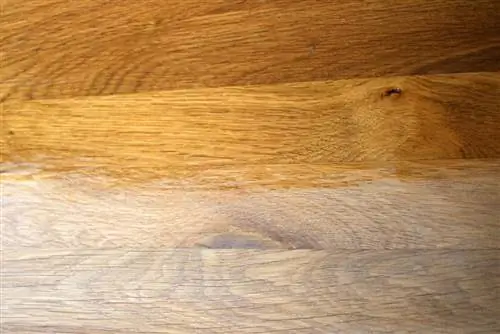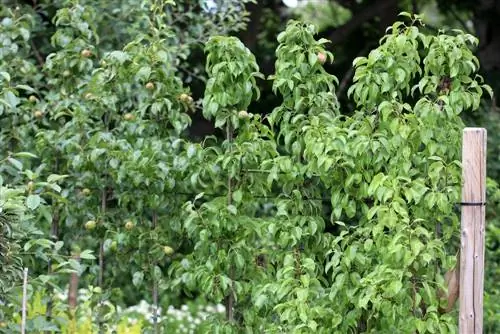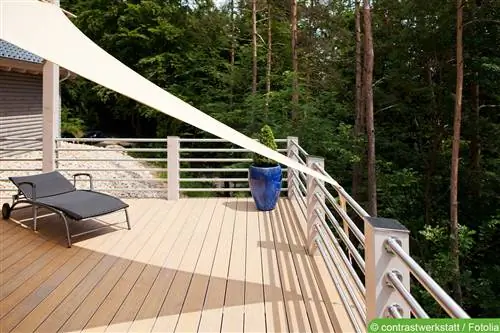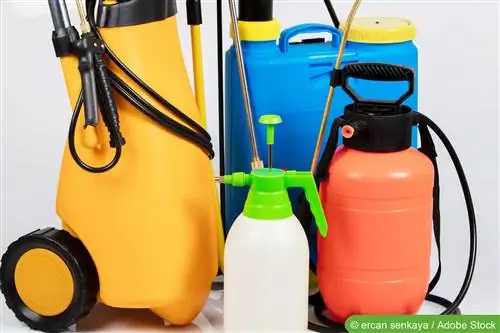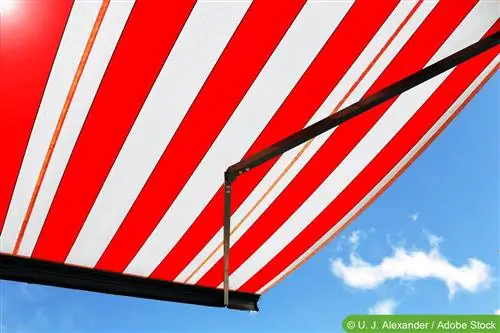- Author admin [email protected].
- Public 2023-12-17 03:39.
- Last modified 2025-06-01 06:48.
Whether it's a terrace or a balcony, anyone who likes to spend time outdoors in summer can hardly avoid a certain amount of weather protection. But which is more worthwhile - sun sails or rain sails? Each sail has its own advantages and disadvantages and offers the best protection for a specific situation. We explain here which sail really makes sense.
Sun or rain sail?
Unfortunately, the answer to the question of which sail really protects cannot be answered universally. It depends largely on what type of protection you want to achieve with the sail. Unfortunately, there is no one, universal type of sail. Before choosing a suitable product, you should therefore consider the following key questions, which can be used to easily answer your individual protection needs, but also the other general conditions for setting up and maintaining your sail:
- Desired weather protection: protection from the sun, i.e. UV radiation, or rain protection by creating a waterproof roof?
- Winter festival or just temporary construction during the summer months?
- Size of area to be covered?
- Static mounting options?
Tip:
If you are not sure what requirements your sail should meet, consider the individual situations in which you felt the need for such protection. Did it rain? Was the sun shining? In what context did you use your open space? This makes it easy to clarify and focus the goal of your efforts.
The protection options
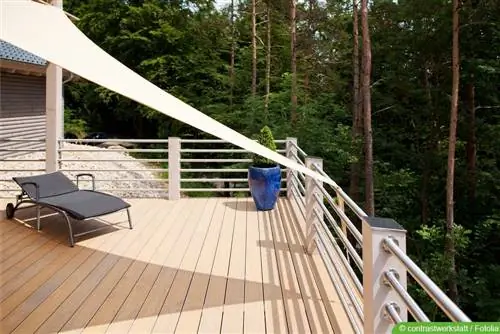
Now that you have answered the question about the requirements for the sail, let's take a closer look at the different options for the individual types of tension sails. Of course, the main part of this is the type of protection provided.
Sun sail
The best known and most widespread form of protective sails are light, freely tensionable sun sails. Different sizes and shapes, such as triangular, square or rectangular, allow the shading of a wide range of open spaces from balconies to terraces to playgrounds and swimming pools.
Materials
mostly textile materials in the form of fabrics, preferably plastic fibers (weather-resistant) or alternatively linen or cotton (not permanently moisture-resistant)
Protective effect
UV radiation and thermal radiation from the sun, efficiency depending on the density and nature of the materials used, usually in the range of 50 to 70% retention of UV radiation
Waterproofness
Not usually given, instead permeable to water to prevent additional static loads on sails and structure caused by water bags after precipitation
Durability
Textile materials very durable thanks to the use of UV-resistant materials, aging due to moisture is hardly possible due to the usually very high water permeability; Natural textiles are significantly less durable, especially not winter-proof (due to wet natural yarns freezing and destroying the fibers)
Assembly / Fastening
Can be mounted very flexibly on house walls, pergola, trees or separately created supports using tension lines or straps; alternatively temporary setup using poles and guy ropes and pegs
Static requirements
No or hardly any rain load to worry about, instead the main load in the case of wind is due to the resulting wind suction, therefore securing against lifting is necessary
Other
Very diverse range of products for every purpose, depending on the desired sizes, material and possibly design, available from EUR 30 to EUR 50
Rain sails
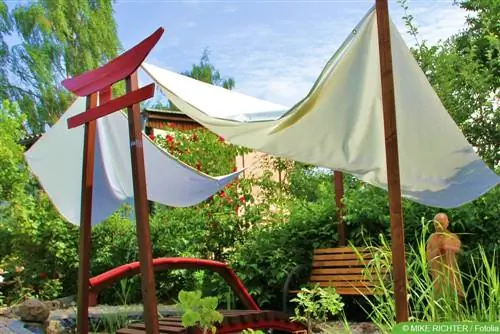
Protective sails against rain are less common in Germany than devices that protect against solar radiation. However, they represent a good alternative to fixed roofing because it is usually cheaper and at the same time more flexible.
Materials
Usually completely water-resistant plastic textiles, or composites made of textile carrier materials with a plastic coating; rare: natural materials such as linen, but here they have a high absorbency with a strong increase in weight when wet
Protective effect
Waterproof, i.e. complete retention of precipitation, usually due to waterproof properties also highly UV-repellent up to 100%, transparent rain sails with significantly lower UV protection
Waterproofness
Depending on material thickness, quality and condition, different water columns, especially textile fabrics become increasingly permeable when water bags form
Durability
Waterproof and therefore also winterproof, but resilience is usually limited due to snow cover, depending on the choice of material only limited UV resistance
Assembly / Fastening
On house walls, pergola, trees or supports possible, setting up over tent poles with tension ropes and pegs only possible to a limited extent due to the weight of the rainwater
Static requirements
Compared to sun sails, significantly higher loads due to higher material weight and load of rainwater, in addition to wind suction, therefore also ensuring static load transfer downwards
Other
Good bracing is important to avoid water bags, usable sizes therefore depend on, among other things, tensioning options; Costs are usually slightly higher than the prices for sun protection sails due to the more technically complex production of the tightness
The result
- comprehensive protection versus effort -
It quickly becomes clear that real protection against all weather influences can only be achieved with a lot of effort. Overall, a suitable sail must keep out both sun and rain and therefore be UV and moisture resistant. Waterproof and UV-proof, only high-quality materials that are not at the lowest price can be considered. In addition, both wind suction and the load of rainwater must be safely absorbed and diverted. The static dimensioning of the attachment is therefore based on the most unfavorable conditions for the individual types of use as sun sails and rain sails. Finally, it remains that the effort required for comprehensive protection clearly comes at the expense of flexibility. The more complex the construction becomes to assemble, the more limited the options are for adapting to changing positions of the sun, etc. Overall, you can say that the more comprehensive a sail is supposed to protect, the more complex, expensive and inflexible it becomes.
Tip:
The more your own ideas can be narrowed down and defined, the more specifically a sail with exactly this orientation can be chosen. THIS is how you can keep costs and effort low!

